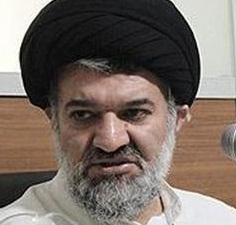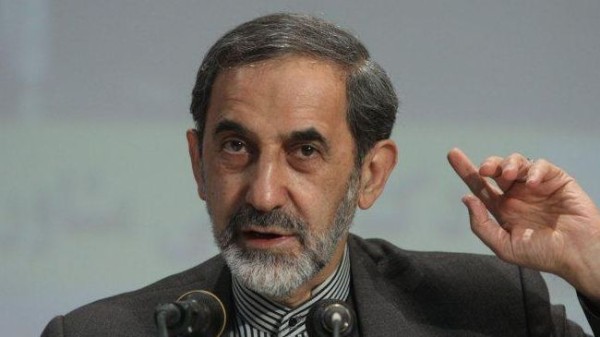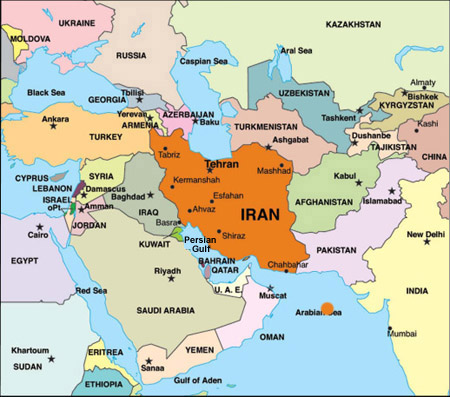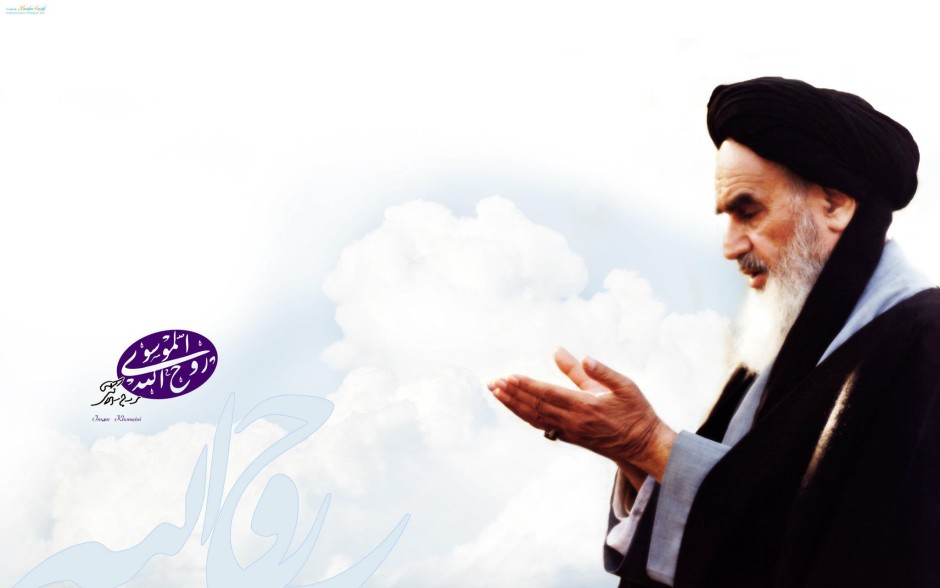
Back in 2010, Iranian Ayatollah Mohammed Bagher Kharrazi called for a “Greater Iran” that would assume hegemonic control over much of the Middle East and Central Asia, stretching from Afghanistan to the Mediterranean.
“If I am elected as president, I will return the lands of Tajikistan, Armenia and Azerbaijan, which were separated from Iran” by the Russians, he announced three years later, when planning to run for president.
This was too much even for the Council of Guardians, Iran’s ideological watchdog, which rejected his candidacy. Iran’s government also disavowed his statement.
But you can be sure that it was noticed in Dushanbe, Yerevan, and Baku.

Nonetheless, since the ascension to power of Ayatollah Khomeini in 1979, Iran has been slowly building an empire in the Middle East, through armed force and terror. Its Lebanese Shi’ite proxy, Hezbollah, has taken Lebanon hostage, and is now helping Bashar al-Assad’s embattled regime in Syria, long an Iranian client.
The Shi’ite government of Haider al-Abadi in Baghdad, which rules those parts of the country not under Kurdish or Islamic State control, is effectively an Iranian puppet. Like his predecessor Nouri al-Maliki, he is a member of the Hizb Al-Dawa, the Islamic party long under Iranian tutelage.
In chaotic Yemen, the Houthis, also allied to Iran, have taken the capital, Sanaa. President Abd-Rabbu Mansour Hadi has resigned and the country is close to disintegration.
The United States has closed its embassy in Yemen following an attack on an American Embassy car on Jan. 19 at a Houthi roadblock. Dozens of CIA operatives and analysts were also evacuated amid mounting security concerns.
The militants’ slogan, which is chanted at rallies and painted on walls in Sanaa, includes the phrase “Death to America,” mimicking the one often heard in Tehran.

A man who did run for the presidency of Iran in 2013, Ali Akbar Velayati, last year declared that his hope is for the Houthis to become to Yemen what Hezbollah is to Lebanon, a Shi’a faction in control of an Arab state.
Velayati, who also served as Iran’s foreign minister from 1981 to 1997, is an advisor to Supreme Leader Ali Khamenei, so his words must be taken seriously. And Kayhan, the Iranian newspaper controlled by Khamenei, has predicted that the Saudi kingdom would not survive the Houthi rebellion in Yemen.
Tehran has also had a hand in trying to destabilize some of the small Sunni-ruled Gulf states, in particular Bahrain, which has a Shi’a majority population. Saudi Arabia has blamed Iran for inciting upheaval in the small country starting in 2011.
Throughout the Arab world, regimes fear Iranian subterfuge on behalf of their brand of radical Islam.
Of late, Iran has even taken to bragging about this. General Qassem Suleimani, the commander of the powerful Quds Force, the foreign wing of Iran’s elite Revolutionary Guards, on Feb. 11 announced that Tehran’s regional influence was growing.
“Today we see signs of the Islamic revolution being exported throughout the region, from Bahrain to Iraq and from Syria to Yemen and North Africa,” he declared.

Partly as a response, Sunni terrorist groups, sometimes bankrolled by the Saudis, Qatar, and other Sunni states, have mounted their own campaigns in the region. The Islamic State (ISIS) controls about 90,000 square kilometres in parts of Iraq and Syria, and is gaining support elsewhere.
Suleimani seemed unfazed by ISIS and al-Qaeda, though, maintaining that the jihadists are “nearing the end of their lives.” After all, the Iranian-backed Quds Force was able to keep Baghdad under Iranian control, and in Syria, Assad has held on to power thanks to Iran’s support.
Indeed, Suleimani’s remarks came as Hezbollah launched a major offensive in the Syrian Golan Heights to retake key areas from rebel forces.
According to Emmanuel Navon, who teaches International Relations at Tel Aviv University, the struggle against ISIS has turned Iran from America’s number one enemy to its indispensable partner. So the United States is adopting a conciliatory attitude in the nuclear negotiations with Iran in order to secure Iran’s cooperation in the struggle against ISIS.
Indeed, as Liel Leibovitz, a senior writer for Tablet magazine, observed recently, American policy has swung toward embracing the idea of an unreconstructed Iran as a key U.S. ally in Iraq, Yemen, Syria and beyond.
“But partnering with Tehran would require Washington and its friends in London and Paris to accept the Islamic Republic as the legitimate government of a fully sovereign state with legitimate interests,” write Flynt and Hillary Mann Leverett, authors of the 2013 book Going to Tehran: Why the United States Must Come to Terms with the Islamic Republic of Iran.
That would be a major mistake. Iran is a devious and powerful state, far more adept at destabilizing the Middle East than are groups like ISIS. Iran doesn’t engage in gratuitous acts of barbarism such as the beheadings of hostages, which create outrage around the world.
Tehran doesn’t take on western powers directly, but acts behind the scenes and through proxies — while continuing to work on acquiring nuclear capabilities.
Henry Srebrnik is a professor of political science at the University of Prince Edward Island.

